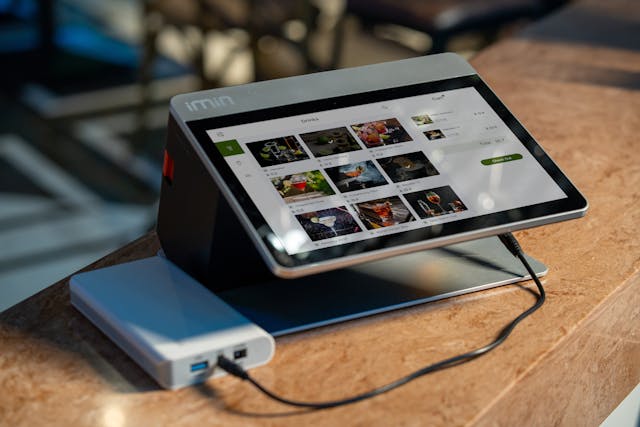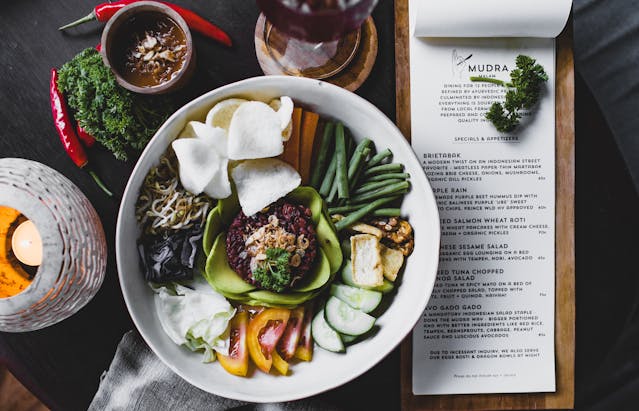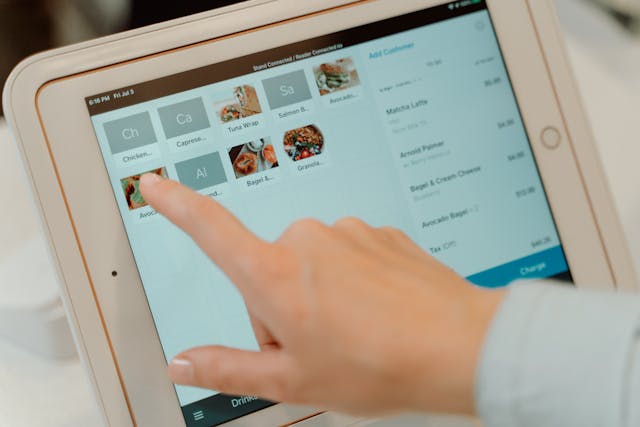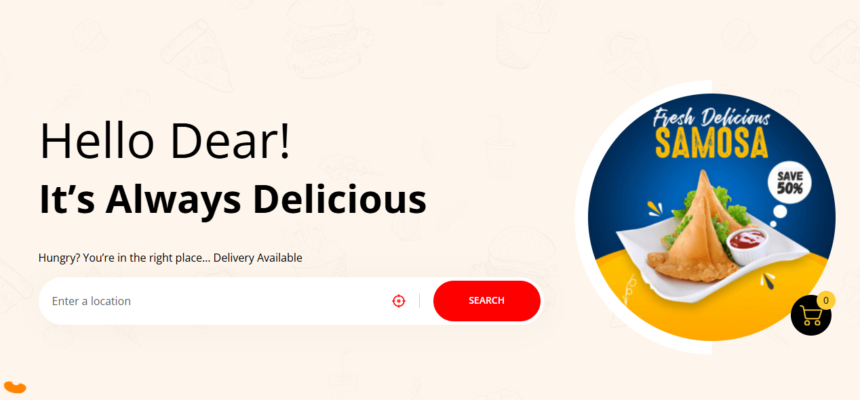This post may contain affiliate links. Without any extra cost to you, we earn from qualifying purchases, if you buy something through one of those links. By clicking on the affiliate links, you automatically agree to our terms and conditions.
Establishing a robust online presence is paramount for restaurants striving to remain competitive in an increasingly saturated market. A well-designed website serves not only as a digital storefront but also as a crucial marketing tool. It plays an essential role in shaping customer perceptions, fostering engagement, and promoting brand loyalty. Consequently, the importance of website pricing for restaurants cannot be overstated.
High quality restaurant website integrates of features such as online ordering systems, reservation capabilities, and contact forms to match customers’ expectations. These features not only enhance user experience but also streamline operations. As such, understanding the costs associated with creating and maintaining a restaurant website is vital for effective budgeting and long-term success.
Why Restaurant Website is Important
A restaurant’s website functions as a dynamic platform where potential customers explore menus, make reservations, and read reviews. Nowadays, consumers heavily rely on online research before visiting a restaurant. It will be a good idea therefore to have an appealing and user-friendly website can significantly influence their menu choices. Furthermore, a website allows restaurants to communicate their unique value proposition, showcase special offers, and facilitate customer interactions.
Moreover, a strong online presence impacts marketing strategies. Restaurants can leverage search engine optimization (SEO) techniques to enhance visibility in search results, ultimately driving more foot traffic and online orders. Engaging content, including blog posts and social media links, can further enrich the customer experience and encourage repeat visits.
With the digital landscape continually evolving, it is imperative for restaurant owners to recognize the significance of investing in a professional website. The subsequent sections of this guide will provide a comprehensive analysis of the various factors that influence website pricing for restaurants.

Components of a Restaurant Website
Creating a successful restaurant website involves several critical components that ensure optimal performance and user experience. Each element contributes to not only the visual appeal but also the functionality and effectiveness of the site. Understanding these components will help restaurant owners make informed decisions regarding website pricing and development.
- Hosting and Domain: Hosting and domain registration are foundational elements that support any website. A reliable hosting service ensures that the website is always accessible and can handle varying traffic levels, particularly during peak hours, such as weekends or during promotional events. The domain name is equally important as it represents the restaurant’s identity online. Investing in a memorable domain can enhance brand recognition and trust among customers.
- Design and Visual: The design of the website plays a vital role in attracting and retaining customers. This includes the choice of colors, fonts, and layout, which should align with the restaurant’s brand identity. An aesthetically pleasing design enhances the overall user experience, making visitors more likely to engage with the content and ultimately make a reservation, order food or visit the restaurant. Thus, investing in professional web design services is often a worthwhile expense.
- Content Development: Content creation is another essential aspect of a restaurant website. High-quality, engaging content includes descriptions of the menu items, photographs, blogs, and information about special events or promotions. This content needs to be regularly updated and optimized for search engines to improve visibility and attract potential customers. An effective content strategy contributes to the restaurant’s online presence and brand story.
- Advanced Functionality: Finally, functionality features like online reservations, food ordering and delivery, menus, and contact forms significantly enhance user experience. These tools provide convenience and encourage customers to interact with the restaurant seamlessly. Integration of online ordering systems can further increase revenue and customer satisfaction. Each of these components is integral to the overall effectiveness of a restaurant website and should be carefully considered when evaluating pricing for website development.
Factors Influencing Website Pricing
As the restaurant industry continues to evolve, the pricing of restaurant websites will be influenced by a variety of critical factors. Understanding these elements can empower restaurant owners to make informed decisions about their online presence. One primary factor is the prevailing market trends, which tend to fluctuate significantly in response to consumer behavior and technological advancements. For instance, the increasing emphasis on online ordering and delivery services has led to a rise in demand for website features such as integrated e-commerce functionalities, which can drive up costs of restaurant website.
Another significant consideration is the level of technology used in website development. As web technologies advance, the expectations of users also increase. A restaurant website leveraging cutting-edge technologies, such as artificial intelligence for personalized customer experiences or advanced analytics for better marketing strategies, will likely incur higher development costs. These sophisticated features necessitate not only a skilled development team but also ongoing maintenance and updates to ensure optimal performance.
Furthermore, industry competition plays a pivotal role in determining website pricing. In a saturated market, restaurants may need to invest more in their online presence to differentiate themselves from competitors. Custom designs, unique content creation, and optimal search engine optimization (SEO) practices are elements that can enhance online visibility but may also lead to elevated costs. Lastly, geographical location affects pricing as local market dynamics and the cost of living vary significantly. For example, websites for restaurants in larger urban areas may come at a premium compared to those in smaller towns due to higher labor and service costs.
In summary, the pricing of restaurant websites will be shaped by market trends, technology levels, industry competition, and geographical considerations, with each factor playing a vital role in how owners should strategize their investments for a successful online presence.
Price Ranges for Different Types of Restaurant Websites
Restaurants face the critical decision of whether to invest in a custom-built website or opt for a pre-designed template. Each choice presents several pros and cons, significantly affecting both initial costs and long-term strategies. When considering the development of a restaurant website, it is essential to understand the varying price ranges that cater to different service levels and functionalities. These can be broadly classified into three categories: basic, mid-range, and high-end websites. Each type offers distinct features that align with different budgetary constraints and marketing objectives.
1. Basic Website
A basic restaurant website is typically designed for establishments that require a simple online presence. The cost for such a website generally ranges from $500 to $1,500. This type of site usually includes essential features such as a home page, menu display, contact details, and a gallery. Basic websites often utilize templates, which can expedite the development process, making them an attractive option for new or small restaurant owners looking to establish their brand without significant financial investment.
2. Mid-Range Restaurant Websites
Mid-range restaurant websites, on the other hand, fall between $1,500 and $5,000. These websites offer additional functionality and customization options. Features included often encompass online reservation systems, integrated social media links, and enhanced visual elements such as custom graphics. This tier serves well-established restaurants aiming to improve their online marketing strategies, making it easier for customers to find information and engage with the brand.
3. High-Range Restaurant
High-end restaurant websites are designed for businesses that require advanced features and tailored aesthetics. The pricing for these websites typically ranges from $5,000 to over $10,000. Such sites often include custom design, extensive SEO optimization, e-commerce capabilities for online ordering, and robust backend management systems. High-end websites are essential for upscale dining establishments aiming to create a significant impact in a competitive market, providing an interactive and user-friendly experience for their clientele.

Ongoing Costs: Maintenance and Updates
- Hosting & Domain Renewal: Maintaining a restaurant website involves various ongoing costs that are essential to ensure optimal performance, security, and user experience. One of the primary expenses is the website hosting fee, which can range from $5 to $100 monthly, depending on the hosting provider and the services provided—such as bandwidth, storage, and customer support. Reliable hosting is crucial, as it affects site speed and uptime, directly impacting customer satisfaction and search engine rankings.
- Website Security: Another significant ongoing cost is related to security updates. Cybersecurity threats are prevalent, and restaurant websites, often handling sensitive customer data, are not immune to these risks. Regularly updating the website platform, themes, and plugins is necessary to protect against vulnerabilities. Hiring a professional for cybersecurity measures can cost anywhere from $100 to $500 annually, depending on the scope of services required, such as malware detection and firewall implementations.
- Updating Content: Content updates are also pivotal for maintaining an engaging online presence. Restaurants must regularly refresh their menus, post promotions, and share events to keep customers informed and attract new visitors. While some owners may opt to manage this internally, content changes can require hiring a professional content manager or digital marketing agency, which can cost from $300 to $1,500 monthly, depending on the frequency and complexity of updates.
- IT Support: In addition to these costs, restaurant owners should consider the fees associated with hiring web developers or IT professionals for maintenance support. Depending on the level of expertise and the frequency of needed interventions, this can amount to roughly $50 to $150 per hour. Overall, budgeting for these ongoing expenses is essential for the sustainability and effectiveness of a restaurant’s online presence, fostering customer engagement and business growth.
Additional Costs: SEO and Digital Marketing
In the modern landscape of the restaurant industry, having a well-designed website is only the beginning. To truly maximize its potential, it is essential to invest in SEO (Search Engine Optimization) and digital marketing strategies tailored to reach a broader audience. SEO enhances a restaurant’s online visibility, ensuring that potential customers can find the restaurant when searching for local dining options. The costs associated with these services can significantly vary based on the complexity of the strategies implemented and the expertise of the service providers.
SEO costs typically encompass a variety of services, including keyword research, on-page optimization, content development, and link building. For instance, a comprehensive SEO package for a restaurant website can range from $500 to $2,500 per month, depending on the market competitiveness and the specific services required. Additionally, ongoing updates and adjustments are often necessary to keep pace with algorithm changes and shifting consumer preferences.
Digital marketing encompasses a range of strategies, including social media management, pay-per-click (PPC) advertising, and email marketing campaigns. Social media management costs could average anywhere from $300 to $1,500 per month, while PPC advertising budgets can vary widely based on target keywords and desired outcomes, with monthly spending potentially exceeding $1,000. Furthermore, email marketing campaigns often require additional investment in software tools, which typically range from $20 to $200 per month, depending on the scale of the mailing list.

The importance of these investments cannot be overstated, as effective SEO and targeted digital marketing efforts drive traffic to the restaurant website, resulting in increased visibility and higher patronage. As such, restaurants should not overlook these critical expenses when budgeting for their online presence. Allocating resources to SEO and digital marketing is crucial for long-term success in a competitive environment.
Conclusion: Budgeting for Your Restaurant Website
As we have explored throughout this guide, establishing a robust online presence is crucial for restaurants. The costs associated with creating and maintaining a restaurant website can vary significantly based on several factors, including the complexity of design, e-commerce functionality, and ongoing maintenance. Understanding these expenses is vital for restaurateurs aiming to allocate their budgets effectively.
One key takeaway is that a restaurant website is not merely an extension of your menu; it is an essential marketing tool that engages customers, drives reservations, and enhances brand visibility. As the digital landscape continues to evolve, investing in a high-quality website can lead to significant returns in terms of increased foot traffic and customer loyalty. Therefore, it is imperative to look beyond initial development costs and consider the long-term financial implications of your choices.
Moreover, when budgeting for your restaurant’s online presence, it is crucial to identify your specific needs. This may include features such as integrated booking systems, food ordering and delivery, user-friendly interfaces, or mobile optimization. Tailoring your website to meet these needs not only improves the user experience but also reflects positively on your brand’s image. Remember that while costs matter, quality, functionality, and responsiveness should be prioritized, ensuring that your website serves as an effective platform for growth.
In summary, approaching your restaurant’s website budgeting with a comprehensive understanding of the associated costs will empower you to make informed decisions. By carefully analyzing your needs and weighing the potential benefits, you can successfully create a digital presence that enhances your restaurant’s visibility and engages your target audience effectively.












